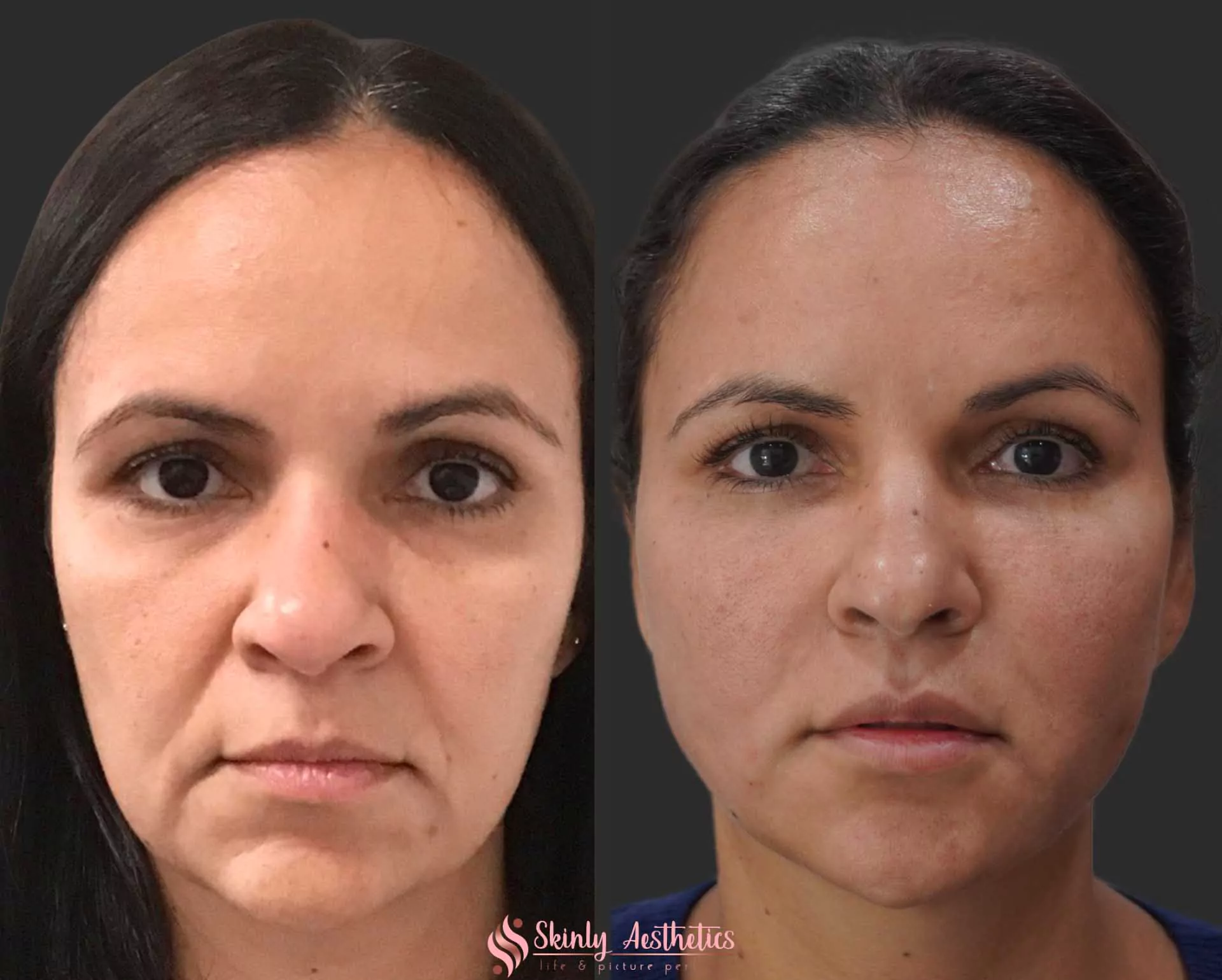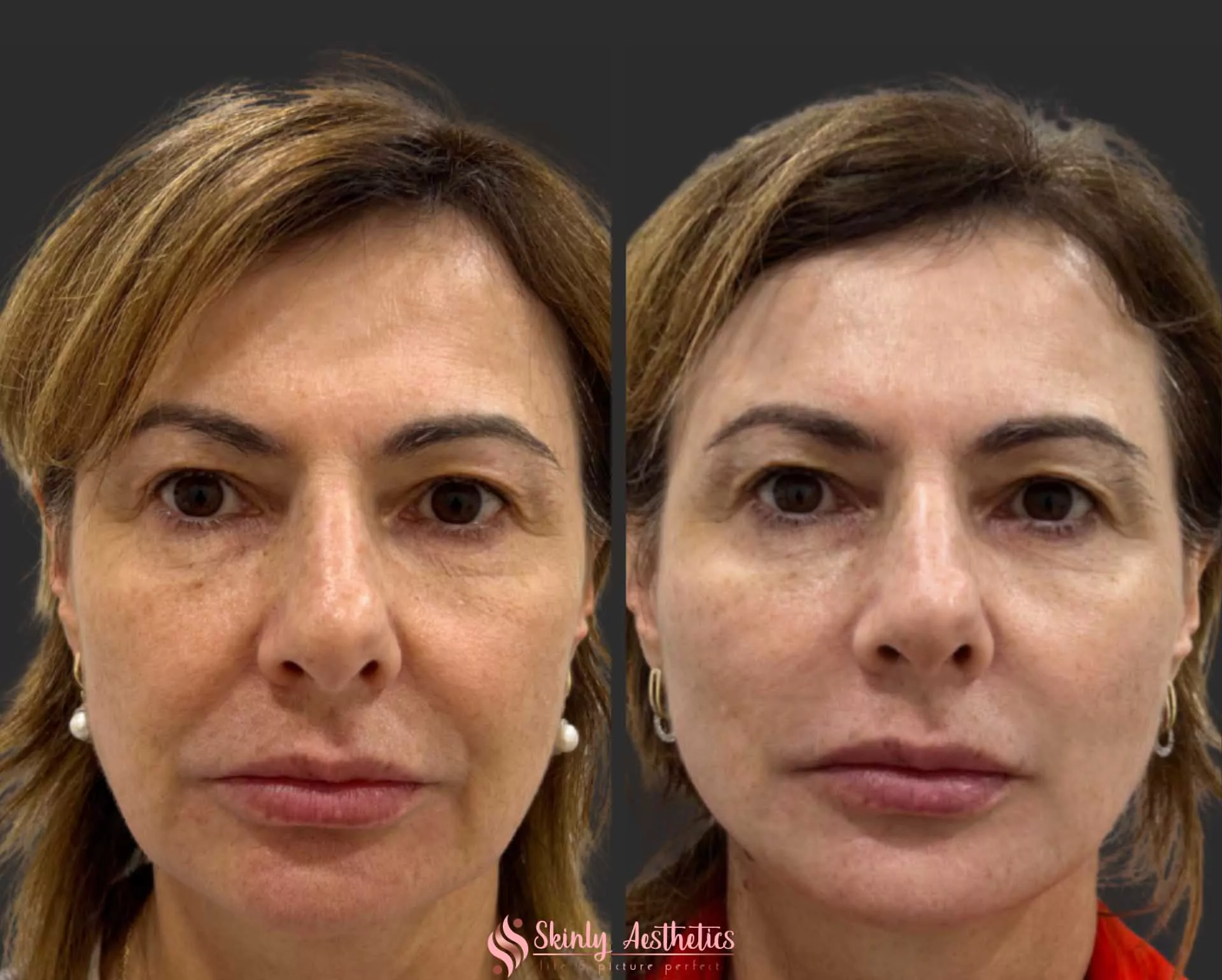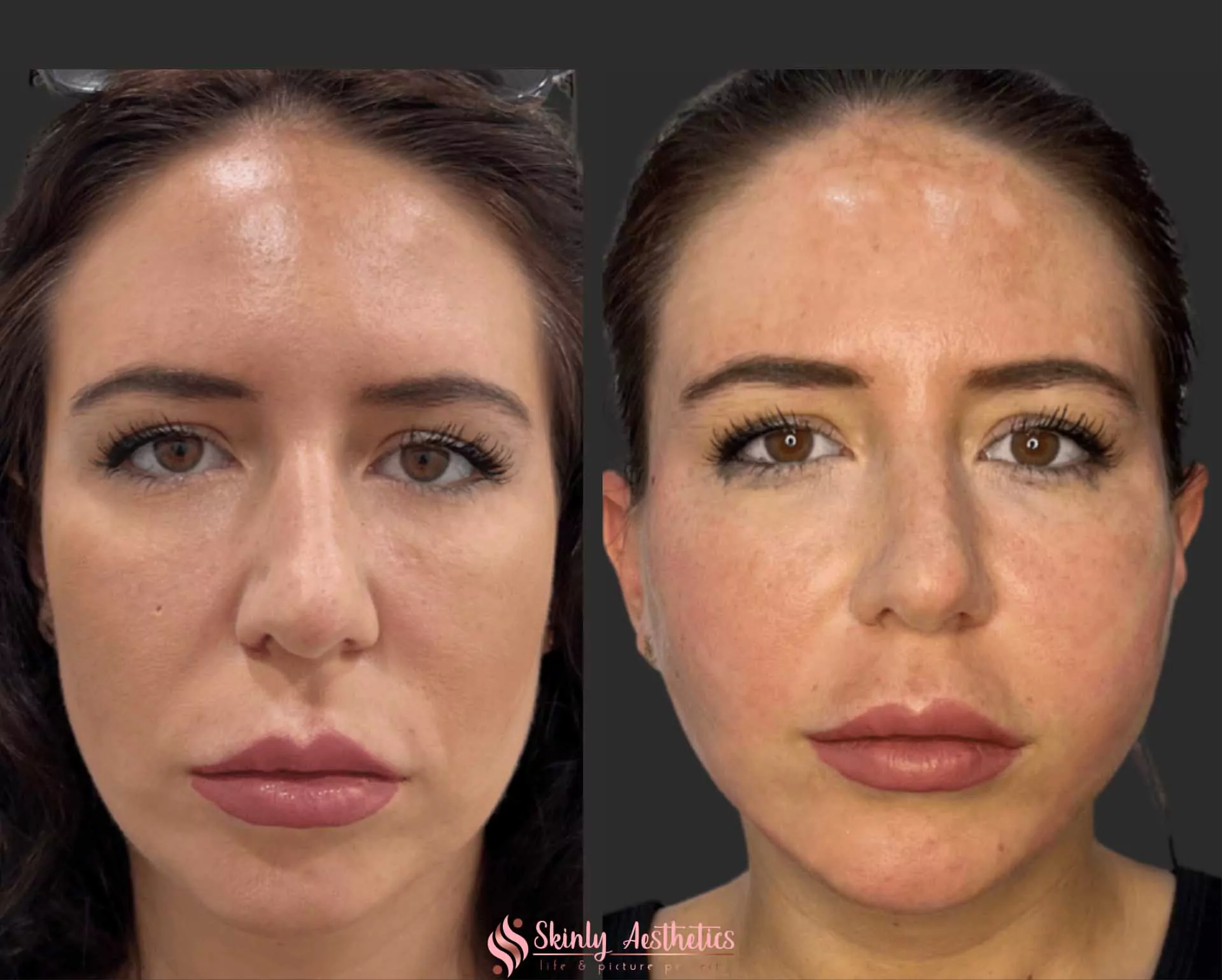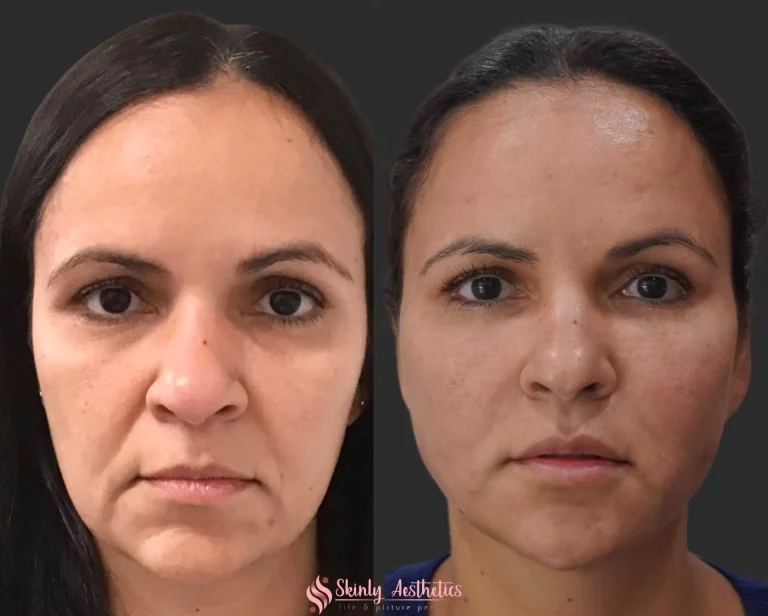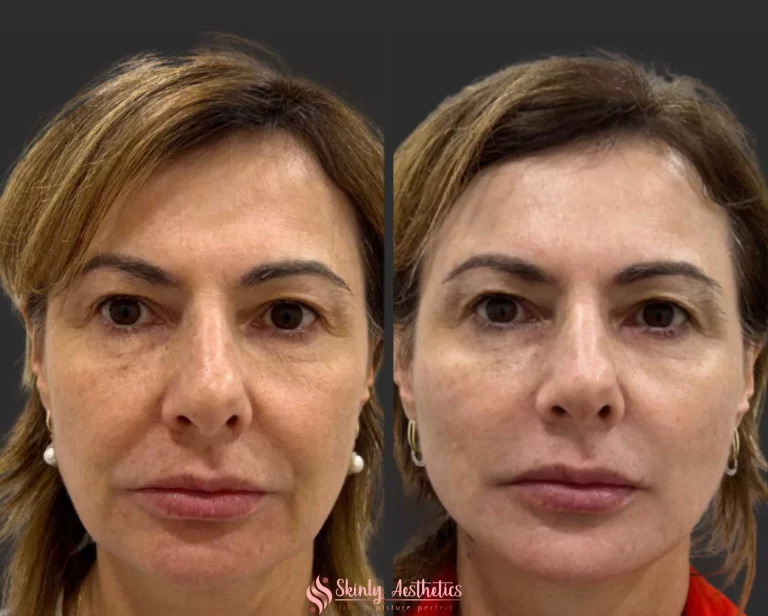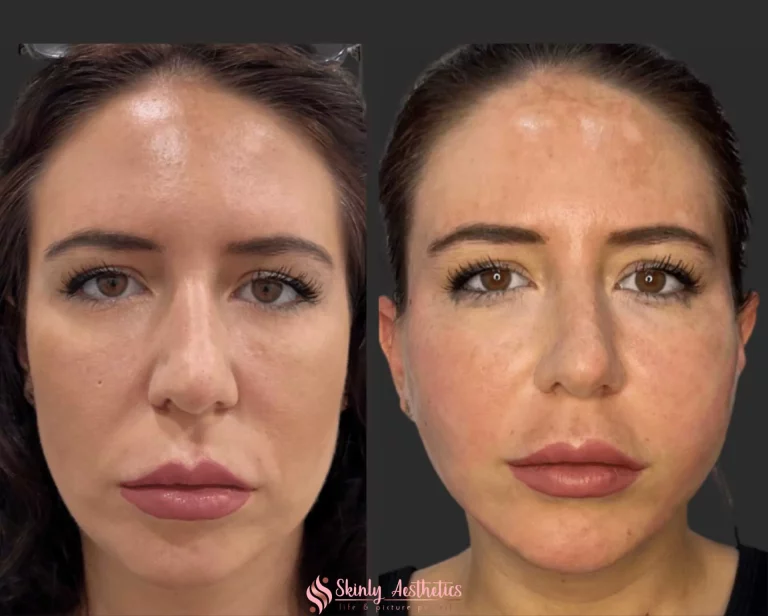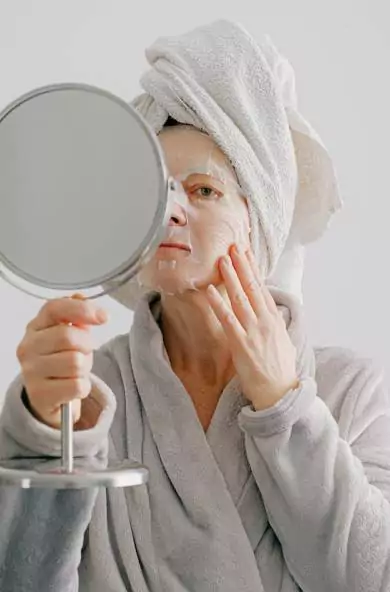Are you looking for a non-surgical way to lift, tighten and rejuvenate your skin? The PDO thread lift at Skinly Aesthetics in NYC, under the expert care of Dr. Schwarzburg, offers a minimally invasive solution that delivers immediate results with minimal downtime. This cutting-edge procedure uses polydioxanone (PDO) threads to lift sagging skin and stimulate collagen production, giving you a more youthful and refined look. Whether you’re dealing with sagging cheeks, a loose jawline, or neck wrinkles, PDO threads can help you achieve a natural, rejuvenated appearance without surgery.
Book Now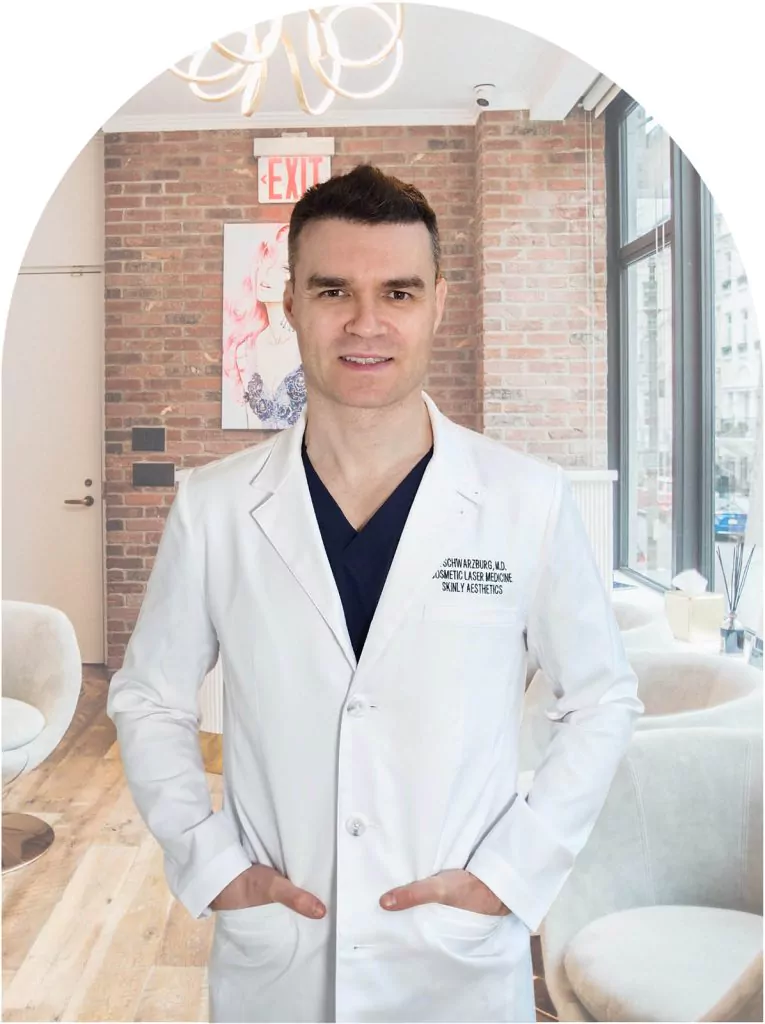
GET 20% OFF YOUR FIRST TREATMENT AT SKINLY AESTHETITCS
FINANCING OPTIONS


Frequently asked questions
How Do PDO Threads Work?
PDO thread lift involves the insertion of absorbable threads under the skin. These threads provide an instant mechanical lift and stimulate collagen production over time. The procedure targets the SMAS layer, where barbed hooks anchor the skin, creating a lifting effect. As the PDO material gradually dissolves, your body generates collagen, enhancing skin firmness and maintaining the lift for a long-lasting result.
What Are Common Areas of PDO Thread Application?
- Midface and cheeks: Elevates loose skin and restores facial contours.
- Marionette Lines: Improves the appearance of downturned mouth corners.
- Jawline and Neck: Sharpens the profile and reduces jowls.
- Fox Eyebrow Lift: Gently lifts low-sitting eyebrows.
- Thread-Based Rhinoplasties: Subtly lifts the tip of the nose.
Am I a Good Candidate for PDO Threads?
Ideal candidates for PDO thread lifts are individuals experiencing mild to moderate skin sagging and looking for a non-surgical solution. If you’re generally healthy and have realistic expectations about the results, PDO threads can effectively address skin laxity due to aging, weight changes, or genetic factors.
When Should I Avoid PDO Threads?
Dr. Schwarzburg explains that certain conditions may make PDO thread lifts unsuitable, including:
- Underlying health issues affecting recovery.
- Active infections or inflammation in the treatment area.
- Sensitivity or allergic reactions to polydioxanone.
- A tendency towards excessive or keloid scarring.
- Significant skin laxity requiring surgical intervention.
How Do I Prepare for PDO Threads?
To ensure optimal results, follow these preparatory steps:
- Stop taking blood-thinning medications and supplements a week before the procedure.
- Avoid alcohol for 48 hours before the treatment.
- Schedule the procedure around major events to allow for recovery.
- Plan the treatment outside of your menstrual period to reduce bleeding.
What Is PDO Thread Lift Process?
The procedure begins with a personalized consultation with Dr. Schwarzburg to discuss your aesthetic goals and develop a tailored treatment plan. During the procedure, your skin is cleaned and numbed with lidocaine. Dr. Schwarzburg will then insert the threads, typically using 10-40 threads depending on your needs. The entire process takes about 45 to 70 minutes.
What Is Aftercare Following PDO Threads?
Post-treatment care is important to achieve optimal results and prevent complications and includes:
- Protecting the skin from sun exposure
- Applying ice packs for the first 24-48 hours
- Using NSAIDs like Ibuprofen to minimize discomfort
- Applying Betadine on the first day to prevent infection
- Avoiding strenuous activities and excessive facial movements for 1-2 weeks
What Is The Downtime?
Expect a brief period of social downtime due to potential swelling, bruising, and initial skin dimpling. Most patients return to daily activities quickly but should avoid vigorous exercise for about two weeks.
What Are The Risks and Complications With PDO Threads?
While generally safe, PDO thread lifts can have minor side effects such as:
- Swelling and bruising
- Tenderness and tightness
- Initial skin puckering and dimpling
- Rare thread extrusion
- Potential infections
When Will I See Results After PDO Threads?
You’ll notice an immediate lifting effect, with continued improvements over the next 2-6 months as collagen production increases.
How Long Do Results Last?
Results can last from 6 months to 2 years, depending on factors such as the number of threads used, the type of threads (smooth or barbed), individual skin laxity, and age. Annual maintenance treatments are recommended for prolonged effects.
How Many PDO Threads Will I Need?
The number of threads varies based on your aesthetic goals and the degree of lift desired. On average, a midface PDO thread lift may require 10-20 threads.
Is PDO Thread Lift Safe?
Yes, PDO threads are FDA-approved and biodegradable, minimizing the risk of allergic reactions. The safety and success of the procedure depend largely on the skill of the provider. Dr. Schwarzburg’s board certification and expertise ensure optimal patient care and treatment safety.
Does PDO Thread Lift Hurt?
The procedure is typically pain-free, thanks to tumescent anesthesia. Patients may experience slight discomfort during the lidocaine injection, but the thread insertion is usually painless. For added comfort, Pro-Nox (a blend of oxygen and nitrous oxide) is available.
What Is the Cost of PDO Threads?
The cost ranges from $1000 to $5000 per session, depending on the treatment area and number of threads used. New patients can enjoy a 20% discount at Skinly Aesthetics.
What Are Different Types of PDO Threads?
- Smooth Threads (Mono Threads): Improve skin texture and address acne scars.
- Barbed Threads: Lift and reposition sagging skin.
- Screw Threads (Twisted Threads): Enhance volume, especially around cheeks and nasolabial folds.
Other Treatments To Combine With PDO Threads?
Combining PDO threads with treatments like Botox, Dysport, and fillers can enhance results. Fillers like Juvederm and Restylane provide additional volume and lift, while defining facial features for a comprehensive rejuvenation.
Collagen-stimulating procedures such as Fraxel Dual laser, microneedling, and Pure Plasma also improve skin texture and elasticity.
How Do I Get Started?
Getting started with PDO threads at Skinly Aesthetics is easy. Schedule a consultation with Dr. Schwarzburg to discuss your aesthetic goals and determine if PDO thread lift is right for you.
Why choose Skinly Aesthetics MedSpa?
At Skinly Aesthetics, our commitment to excellence in cosmetic treatments is led by Dr. Schwarzburg, a renowned board-certified cosmetic dermatologist and wellness expert with over a decade of experience. With tens of thousands of procedures performed, Dr. Schwarzburg ensures that our practice remains at the forefront of medical advancements and anti-aging innovations, transforming both skin health and body aesthetics.
Situated in a prime Upper East Side location in New York City we specialize in personalized skincare, body contouring and wellness treatments designed to deliver exceptional results.
Dr. Schwarzburg personally administers all treatments, ensuring the highest level of care and precision. His expertise is frequently featured in leading beauty magazines and publications, further cementing his reputation as a top expert in the field of wellness and medical aesthetics. Our premium services are meticulously tailored to address the unique needs of each client, helping you achieve your best appearance, performance and feel confident in your skin.
Start your beauty and wellness journey by scheduling your consultation online, or alternatively text us directly at (212) 774-4264 or email info@skinlyaesthetics.com.
Explore treatment options tailored just for you. Schedule your consultation right now.
Consult with Dr. Schwarzburg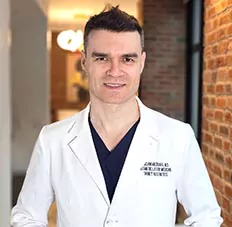
 info@skinlyaesthetics.com
info@skinlyaesthetics.com  212-774-4264
212-774-4264 


















